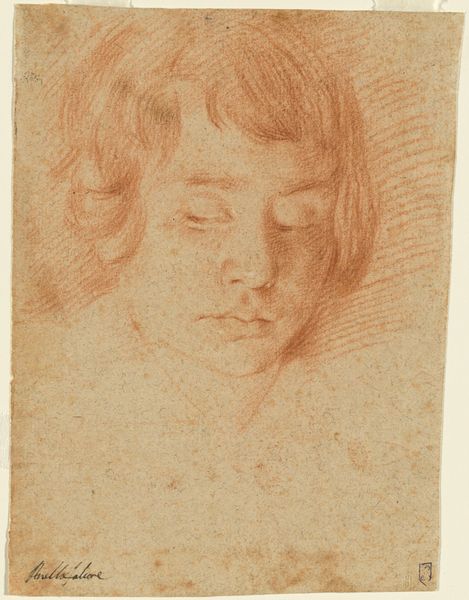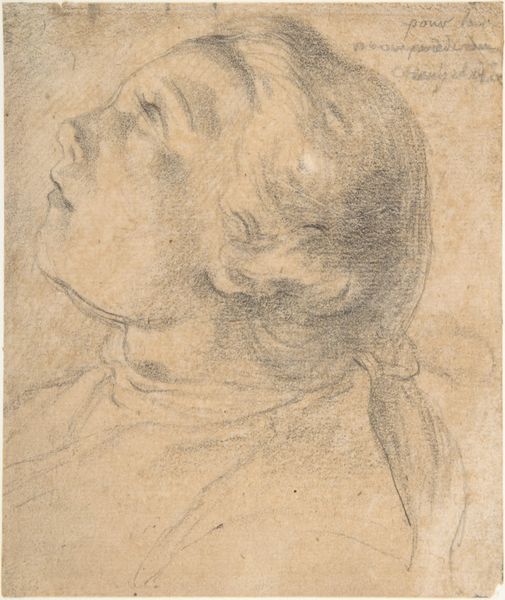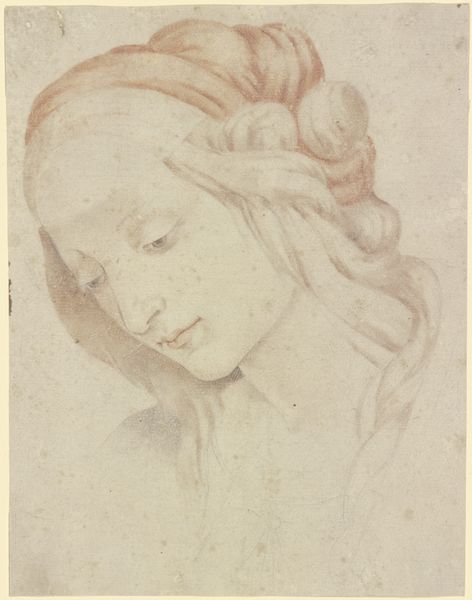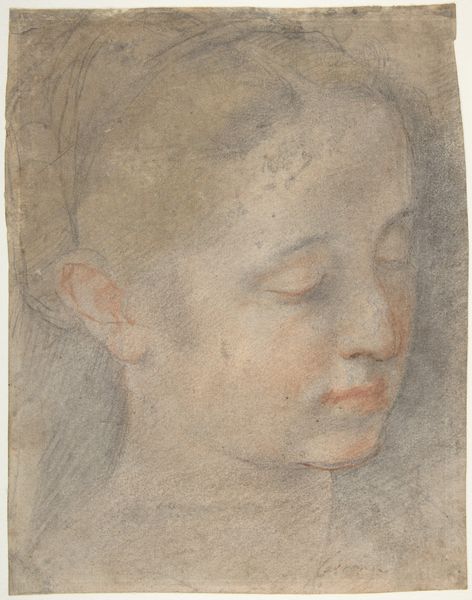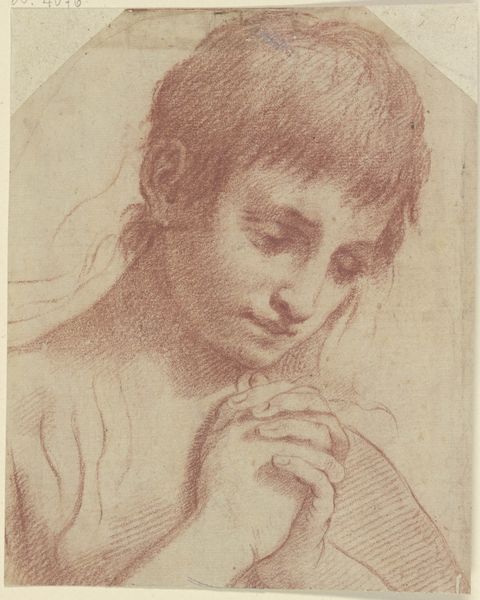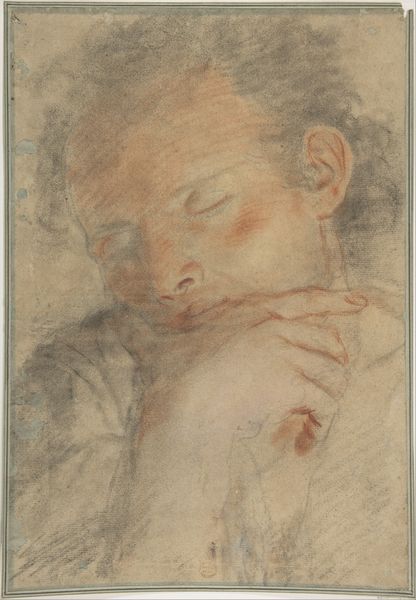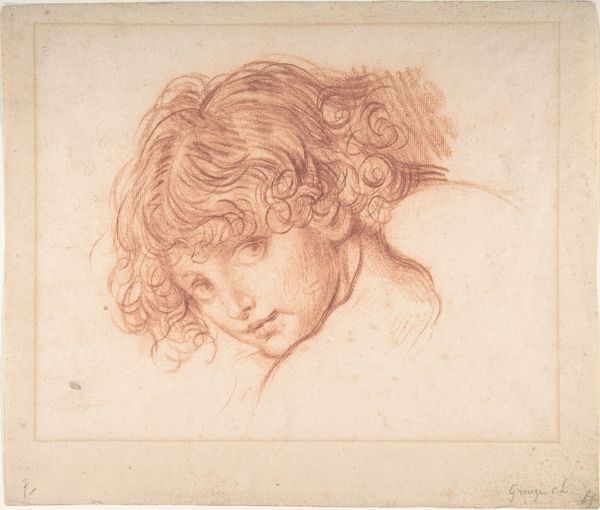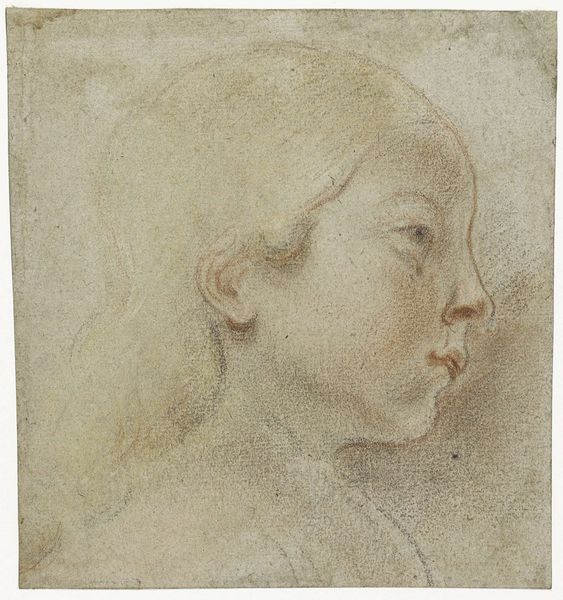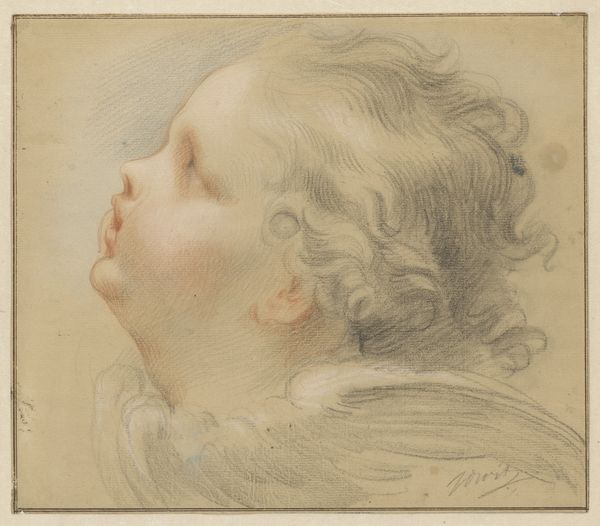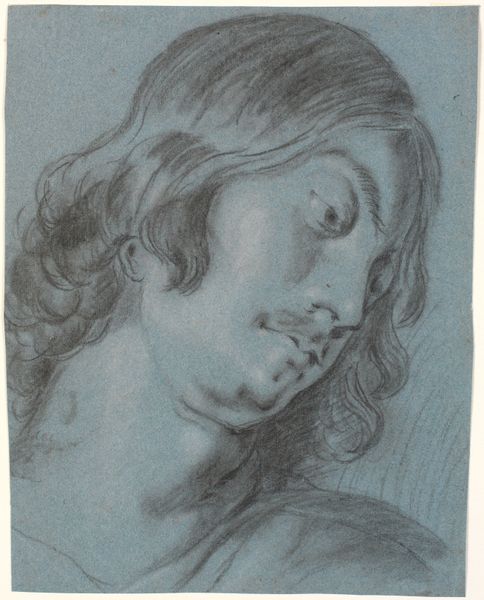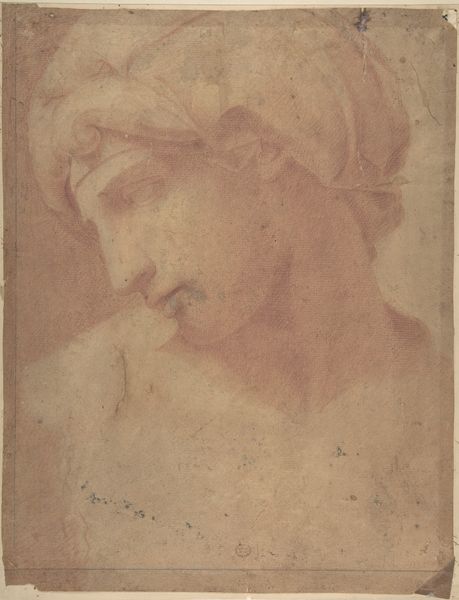
drawing, print, paper, pencil, chalk, black-chalk
#
portrait
#
drawing
# print
#
pencil sketch
#
charcoal drawing
#
paper
#
11_renaissance
#
oil painting
#
pencil drawing
#
pencil
#
chalk
#
black-chalk
#
watercolor
Dimensions: 211 × 139 mm
Copyright: Public Domain
Curator: This drawing is entitled “Head of Youth Looking Down.” The artist is Matteo Rosselli, although we don't have a specific date of creation. It resides here at the Art Institute of Chicago, a study executed with pencil and chalk on paper. It strikes me with its somber quality. Editor: Yes, there’s a quiet melancholy in that averted gaze. You see the layered strokes of chalk and pencil, almost a visible record of the artist’s process and revisions. The very physical act of drawing becomes the subject in a way. What can you tell us about its broader artistic context? Curator: Rosselli was active during the Renaissance, and as such this head seems informed by the humanism that informed the era. His downcast expression could embody humility. Remember, portraits at the time were powerful assertions of identity, gender, race and status. I'm also struck by its relation to contemporary concepts around vulnerability, male emotion, the precarity of youth. Editor: I appreciate how this brings art history and theory into a real dialogue, considering questions of access, privilege, and visibility then and now. It certainly resonates. I think looking closely at the way the work was materially created—the paper, the pigment, the physical act of repeatedly and deliberately placing line after line is deeply affecting, knowing that this portrait must've been a social project. What choices in material are being made, for whom, under what conditions? Curator: It prompts us to look critically at what might otherwise appear as a straightforward, classical rendering. I hadn't considered its resonance with my social circles today! Editor: Agreed. It’s that layering of time periods, materiality and lived experience that allows us to find new meaning in such art. The piece remains vital, not a relic. Curator: Very true. The interplay between subject and method gives this artwork so much of its character, and I wonder how this might change depending on the sociopolitical climate around viewers. Editor: Absolutely. Seeing those traces, the residue of making and time itself – really does make you feel differently.
Comments
No comments
Be the first to comment and join the conversation on the ultimate creative platform.
